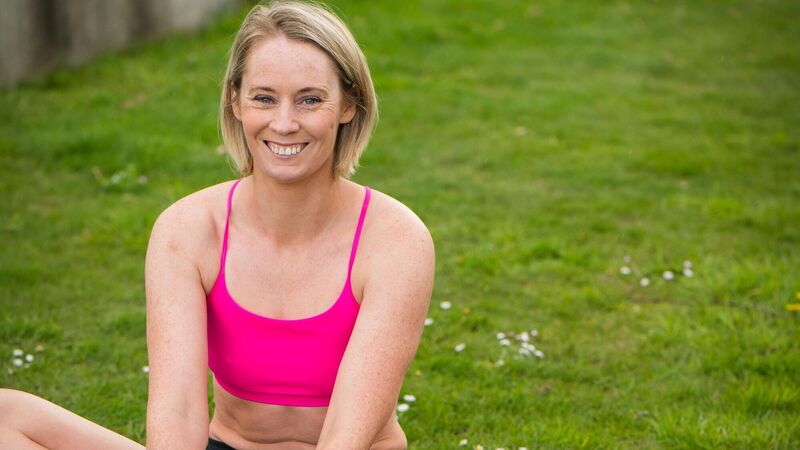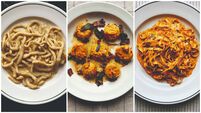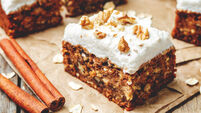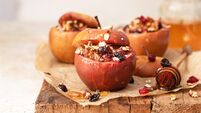Derval O'Rourke on breathing, posture and engaging your core

Derval has seen the benefits of pilates.
Movement and exercise come in many different forms. For me I’ve been doing pilates for years and I’ve always found it really useful. This week I’m going to talk about Pilates and a couple of the main elements of pilates - Breathing, Posture and Engaging Your Core. I’ve worked with Pilates expert Julette Jones of Flex in the City studio to share this with you. Recipe wise I’m going to share a lovely simple recipe, Easy Eggs in Jackets.
Pilates is often associated with improving breathing and posture but the two are rarely joined together in most people’s thinking. There is a real link between the two which is fundamental to practicing Pilates and which has a huge carry-over benefit to your everyday life.
I hear it all the time - “I really enjoyed the pilates but I definitely got the breathing all wrong!”
I always tell people that there is no wrong way to breathe - you do it all day, everyday without anyone telling you how, and the fact that you are reading this means you have been doing it well enough. Breathing is fundamental to life but that doesn’t mean we are all doing it very well (eating is fundamental to life as well but that doesn’t mean we are all great cooks).
The reality is that our posture is the thing that most affects our breathing. Imagine you spend more than a few hours sitting down, hunched over a computer - the intercostal muscles and diaphragm can’t contract well enough and with the abdomen compressed, your organs can’t get out of the way well enough to create good pressure on every breath so you don’t take in nearly as much air as your lungs actually can hold. Then your weak abs also do a less than perfect job pushing what air you get back out.
The amount of oxygen you take in then is less than optimal which can cause issues like fatigue and even make you feel more stressed than you should be, as there is more pressure on your heart and lungs to take in more air. This can trigger a stress response in the body to elevate cortisol levels. Proper breathing can help lower stress levels, give you more energy, improve your posture, help you to engage and use your core, allow you to get more out of your workouts and help to strengthen your postural muscles.

So you know that Pilates is all about developing a strong, stable core from which all movement comes, it’s the perfect mix of strength and flexibility, balance, coordination and control. It makes you better at everything from running a marathon to getting out of bed every morning without feeling stiff, squatting your bodyweight to loading the dishwasher.
But what even is the core, and how do you engage it? I like to describe the core as everything that isn’t your arms, legs and head - think like a tin of beans in the middle of your body.
This is especially helpful as we often think core = abdominal muscles only and that couldn’t be further from the truth. In fact, if you try to strengthen your core and you only focus on your abdominals, you could be causing issues for yourself down the line, as the purpose of the core is to support and stabilise the spine. Think of strengthening your core like pitching a tent - for the poles (spine) to be secure you have to tie them down from all sides.
Your core is made up of several layers of muscle but we will focus on the ‘corset’ muscles of the core here to make it easier to get the connection into your body. The bottom of the tin of beans is your pelvic floor, the round tin is the transverse abdominis (TVA) and the top of the tin of beans is the diaphragm. In order to connect to your core and engage it effectively, the top, bottom and middle of the core need to be working in sync.
If you’re interested in learning more about pilates and practising it at home I’m starting a brand new pilates challenge on Derval.ie on Monday August 10. The challenge will have daily pilates workout videos to follow along, feelgood recipes and self-care tips. There will be a LIVE workout every Monday night at 8.30pm with Julette Jones who will guide you to move well through the session.
Dedicate some time to a new form of exercise - your body and mind will thank you.
Pay complete attention to something you usually do on auto-pilot eg making a coffee or tea.

This is an easy and nutritious breakfast, lunch or dinner option. It uses simple ingredients to create a balanced meal. I love to bake a bag of potatoes on a Sunday evening and then keep them in the fridge for hassle free midweek dinners. These are also very handy in a picnic!
[i]Prep Time: 5 mins
Cook Time: 10-15 mins
Serves: 4 [/i]
- 4 large potatoes, baked and allowed to cool.
- 8 free range eggs
- 50 g cheddar cheese, grated
1. Pre heat the oven to 160 degrees.Line an oven proof tray with parchment paper.
2. Cut the baked potatoes in half and scoop out enough of the flesh to create a medium sized well 3. Crack an egg into each of the potato halves.
4. Place in the oven for 8-10 minutes. Remove from the oven, sprinkle over the cheddar cheese and then return to the oven for a further 2 minutes or until the cheese starts to melt slightly.
5. Remove from the oven and enjoy.





